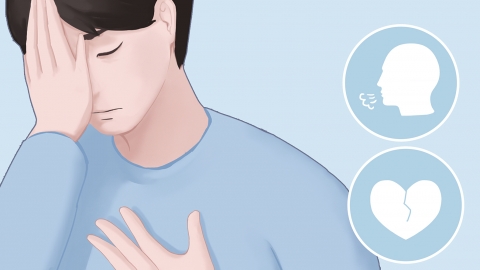Is shortness of breath in patients with depression severe?
When patients with depression experience shortness of breath, the severity should be assessed based on specific underlying causes. If the symptom is solely triggered by emotional anxiety and not accompanied by physical illness, it is generally not considered serious. However, if it results from physical conditions such as heart or lung disease, or if episodes occur frequently, the condition is more severe and requires targeted intervention.

When shortness of breath is caused by emotional fluctuations, it is often a manifestation of anxiety symptoms accompanying depression. Patients commonly feel chest tightness and rapid breathing, although actual respiratory function remains unaffected. In such cases, symptoms typically gradually improve through calming emotions and regulating breathing patterns, such as slow deep breathing or relaxation techniques like meditation.
If shortness of breath occurs frequently or is accompanied by symptoms such as chest pain, palpitations, or dizziness, it may indicate that depression is co-occurring with physical illnesses like asthma or heart disease. In these situations, symptoms can not only worsen psychological distress but also pose risks to physical health, necessitating timely evaluation and treatment of any underlying medical conditions.
In daily care, family members should closely monitor the patient's emotional changes and encourage open expression of feelings. Patients can regulate their mood through regular physical activity, such as walking or yoga, while ensuring good indoor ventilation and avoiding enclosed spaces that might exacerbate breathing discomfort, thereby improving their overall physical and mental well-being.





